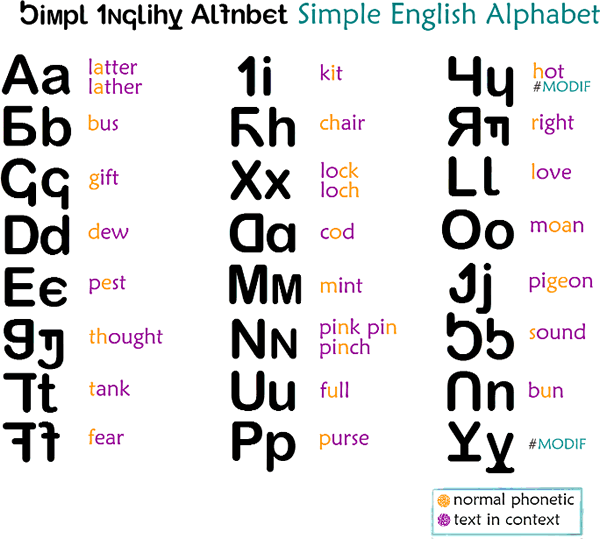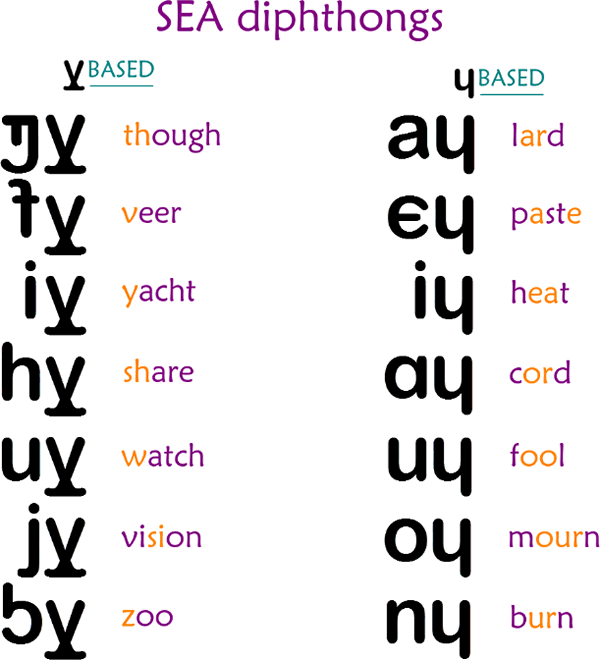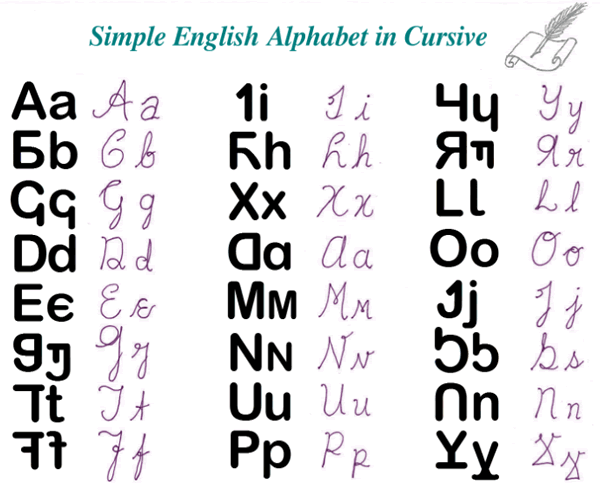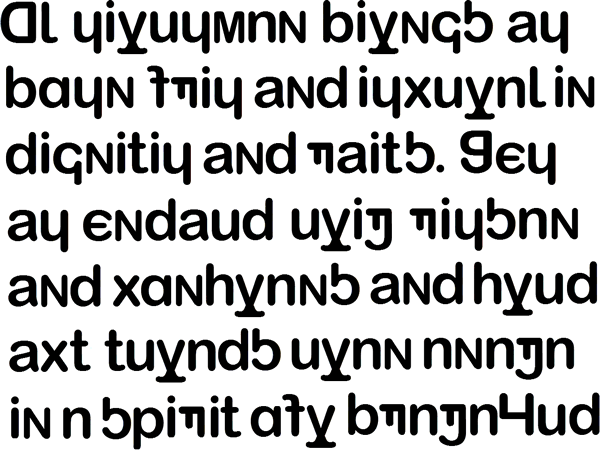The SEAscript was invented by Punya Pranava Pasumarty. SEA stands for Simple English Alphabet. It enables easy usage of the English language by having every letter phonetically consistent, so that you can faithfully write what you say. Another reason for its being 'simple' is that, unlike the IPA, which splits hairs in the notation of its letters, this is more intuitive and tailored for the English language.
Punya Pranava Pasumarty has designed the glyphs of this script based primarily on the Latin Alphabet and secondarily on the Greek and Cyrillic ones with a few changes here and there. If and when this alphabetgets to see the light of day, it has the following aims to fulfill
Since the script abides by pronunciation of words, there is a flexbility in the spelling of words that the script accommodates. However, it is important to go by a standard spelling system for everyone around the globe to understand, so British English pronunciation, most accurately brought out by the Oxford dictionary, is taken as the standard.

Modifier letters are basically those which combine with other letters to form diphthongs. In the image, these modifiers have been labeled as 'MODIF'. Among the vowels the modifier is 'Y', the last letter of the alphabet, and among the consonants, the 17th letter of the alphabet is. While the former has no sound without combination, the latter has a 'h' sound when not combined. The former letter was originally equivalent to the 'ayn' sound that is present in Hebrew and Arabic, but since it had no role to play in English, and most European languages for that matter, it was rendered a soundless vowel (sometimes used to 'write' silence or a brief gap like in the word 'uh-oh'); it was eventually pushed to the end of the alphabet. Quite interestingly, the vowel modifier combines to form consonants and the consonant modifier, vowels. The former makes some consonants, which are normally unvoiced, voiced, and makes some others fricative in quality. These are actually variations of the same sound used interchangeably in English many a time, so the use of this modifier is up to the discretion of the writer. However, the latter cannot be taken lightly since it lengthens the vowel sound with which it combines, for its omission may lead to confusion.

There is a feature of SEAscript called mid-word capitalisation in which a letter (typically a modifier) in the middle of the word is capitalised to account for a variation in pronunciation or meaning of the word. This is not very commonly used but it is helpful for foreign words. Suppose you have a modifier in the middle of a word juxtaposed to a letter that usually forms a diphthong with it, but you want it to be uncombined, then that modifier can be capitalised to uncombine it. Sometimes a vowel can undergo mid-word capitalisation for its emphasis, but that is not a standard rule of SEAscript. Consonants can go through the same but for a different reason; its pronunciation is unaffected but an alternate meaning is suggested for the word. This helps distinguish between homophones although it is not used often, unless a text is written in the aim of illustrating homophones or definitions.
SEAscript, unlike other alphabetic scripts, doesn't provide variations in the shapes of its letters in order to keep things simple, but there is a cursive form of each letter small and capital. This is provided for ease of handwriting. Even in block handwriting some liberty can be taken with the shapes of some letters like the omission of the vertical stroke in the 's' letter. In block writing, the dot over 'i' and 'j' can be omitted but this cannot be done in cursive writing for it would lead to confusion. Also, the shape of 'a' is a bit tricky to write quickly both in block and cursive, so it can be simply substituted for a '![]() ' shape. An image of the basic cursive form with block equivalents is given below.
' shape. An image of the basic cursive form with block equivalents is given below.

This cursive reckoner does not include alternative forms of cursive letters, used for quick writing, which were mentioned earlier, since they are similar enough to their basic forms to recognise. They are nonetheless used often to facilitate handwriting. Sometimes small 'i' and 'j' in cursive are written by putting a tiny loop joined to the main letter in place of the dot. With this common variation, every word in SEAscript can be written with just one unbroken stroke (i.e no dots and dashes in-between).
Block version

Cursive version

All human beings are born free and equal in dignity and rights. They
are endowed with reason and conscience and should act towards one another
in a spirit of brotherhood.
(Article 1 of the Universal Declaration of Human Rights)
Bhāratalipi Unified Indian Script (BLUIS), Charunagari, Deccan Lipi, Devadeshi, Ethiofarsi, Españabugida, Farsi Alefbet, Featural Lojban Abjad, Haruf-e-Tana, Palimukhi, Neobrahmi, SEAscript, West Eurolex
Constructed scripts for: Ainu | Arabic | Chinese languages | Dutch | English | Hawaiian | Hungarian | Japanese | Korean | Lingala | Malay & Indonesian | Persian | Tagalog / Filipino | Russian | Sanskrit | Spanish | Taino | Turkish | Vietnamese | Welsh | Other natural languages | Colour-based scripts | Tactile scripts | Phonetic/universal scripts | Constructed scripts for constructed languages | Adaptations of existing alphabets | Fictional alphabets | Magical alphabets | A-Z index | How to submit a constructed script
[top]
You can support this site by Buying Me A Coffee, and if you like what you see on this page, you can use the buttons below to share it with people you know.

If you like this site and find it useful, you can support it by making a donation via PayPal or Patreon, or by contributing in other ways. Omniglot is how I make my living.
Note: all links on this site to Amazon.com, Amazon.co.uk
and Amazon.fr
are affiliate links. This means I earn a commission if you click on any of them and buy something. So by clicking on these links you can help to support this site.
[top]